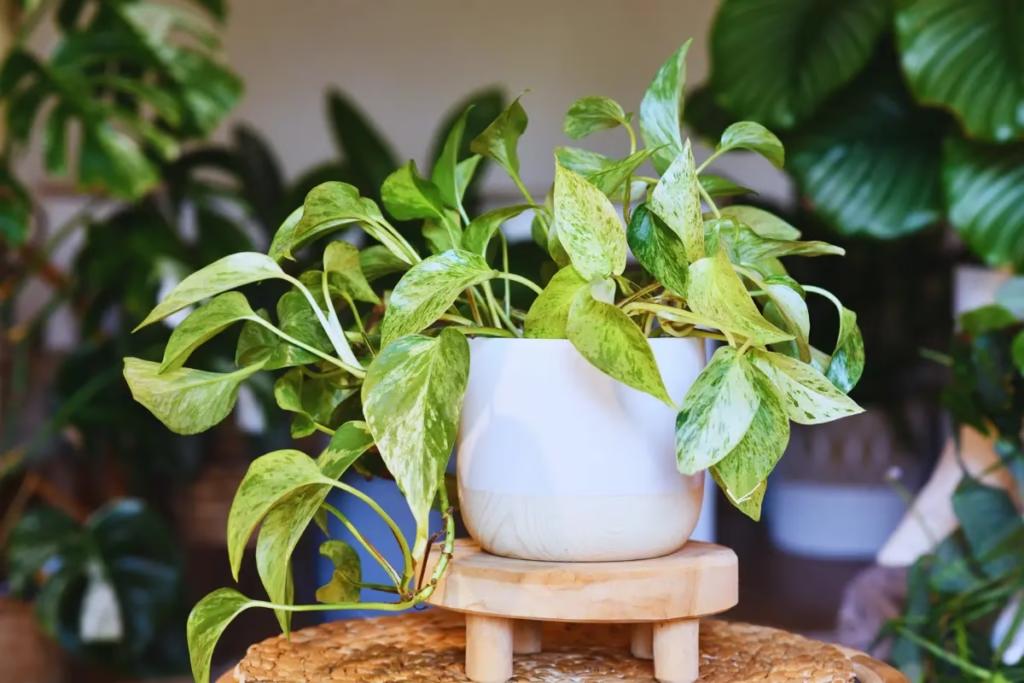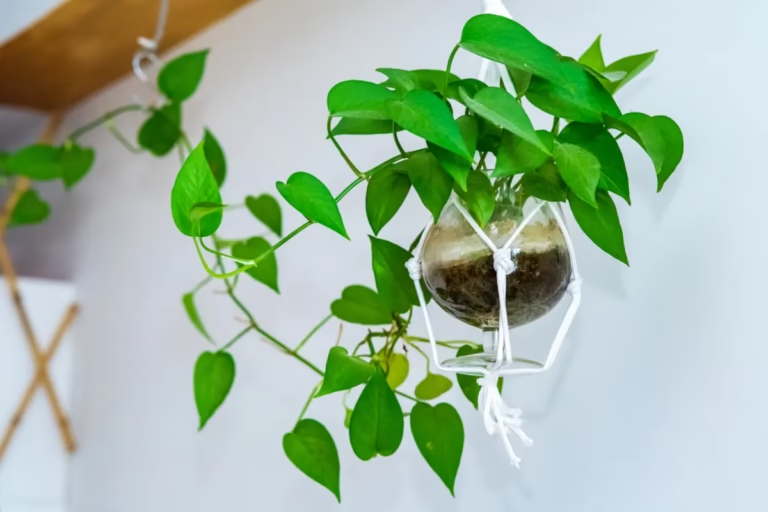Pothos vs Devil’s Ivy Explained: One Plant, Two Names

Did you know a single plant has earned not one but two wildly different names—Pothos and Devil’s Ivy—all while being nearly indestructible and capable of purifying the air in your home? If you’ve ever wondered why gardeners argue about these names or which variety is the best for your cozy corner. Whether you’re a plant newbie or a seasoned green thumb, this guide about Pothos vs Devil’s Ivy, will clear up the confusion and help you choose, care for, and love these stunning trailing vines.
Quick Answer
Pothos and Devil’s Ivy are two names for the same plant—Epipremnum aureum. “Pothos” is its botanical name, while “Devil’s Ivy” is a nickname for its resilience. No matter what you call it, it’s the same easy-care, air-purifying houseplant.
Devil’s Ivy Vs Pothos: Facts to know
Most plant lovers get confused when talking to a gardener about pothos, and the gardener suddenly calls it ‘Devil’s Ivy.’ It makes them wonder if they’re different plants—but the truth is, they’re the same.
Are Pothos and Devil’s Ivy the Same Plant?
Yes, Pothos and Devil’s Ivy are the same plant—they’re just two different names for Epipremnum aureum. “Pothos” is the formal name often used in nurseries and plant care guides, while “Devil’s Ivy” is a common nickname, especially for its tough, trailing nature. No matter which name you use, you’re referring to the same versatile and beautiful houseplant.
What Makes Pothos a Popular Houseplant?
Pothos (Epipremnum aureum) is one of the most beloved indoor plants worldwide—and for good reason. Known for its cascading vines and glossy, heart-shaped leaves, this tropical beauty brings life and greenery into any space. It adapts well to various light conditions, thrives on minimal care, and grows quickly, making it a go-to choice for both plant beginners and seasoned collectors.

What Is Devil’s Ivy and Why Is It Called That?
Devil’s Ivy is simply another name for the classic Pothos plant, particularly the Golden Pothos variety. The nickname comes from the plant’s legendary resilience—it’s nearly impossible to kill and stays green even in dark corners where most plants would struggle. The name “Devil’s Ivy” captures its tenacity and almost supernatural ability to thrive in less-than-ideal conditions.
Related: Explore the Spider Plant Vs Snake Plant & Money Tree Vs. Money Plant to find the best plant match for you home. Keep Greenery —Be healthy.
What is the differences between Pothos and Devil’s Ivy?
There are no botanical differences—they are the same species, Epipremnum aureum.
- Both are often called “trailing vines” and share the same care needs.
- The name “Devil’s Ivy” highlights its toughness; “Pothos” is the more formal, scientific term.
Feature | Pothos | Devil’s Ivy |
Botanical Name | Epipremnum aureum | Epipremnum aureum |
Common Usage | More formal, used in plant shops & guides | Also used, especially for classic green/yellow types |
Varieties | Many (Golden, Marble Queen, Neon, Jade…) | Usually refers to Golden Pothos |
Tone | Neutral, descriptive | Colloquial, emphasizes resilience |
Which is easier to care for?
All Pothos also called Devil’s Ivy are equally easy to care for.
- They thrive in bright, indirect light, but tolerate low light too
- Water when the top 2 in (5 cm) of soil are dry; avoid waterlogging to prevent root rot
- Maintain temperatures between 65–75 °F (18–24 °C) and moderate humidity (~40–60%)
- Monthly balanced fertiliser in spring/summer supports growth
Care Tips For Beginners
How do the popular varieties compare?
Cultivars differ in leaf color and light needs, but care routines are the same.
Can I easily propagate Pothos/Devil’s Ivy?
Absolutely—each stem cutting roots in water or potting mix.
What are the common problems faced by pothos
In the whole lifespan of pothos, it faced some common problems whihc are Mostly about light, water, or pest-related:
Related: Peace Lily vs. Calla Lily & Money Tree vs Umbrella Plant
Is Pothos poisonous?
Yes, Pothos is toxic to pets and humans if ingested. It contains insoluble calcium oxalates that can cause mouth irritation, vomiting, and difficulty swallowing. Keep out of reach of children and animals.
Final Thoughts
While Pothos and Devil’s Ivy are one and the same, the magic lies in their ease, resilience, and variety. From the gold-splashed classic to trendy Neon or elegant Marble Queen, these vines elevate any space. Pothos fit every room—living, workspace, bathroom—and reward you with lush, cascading beauty.
Whether you refer to it as Pothos or Devil’s Ivy, this thriving vine belongs in every plant-lover’s collection. Ready to grow your own? Pick your favourite variety, pot it up, and watch it flourish! If you found this guide helpful, share it with fellow plant parents or drop a comment below with your favourite cultivar.



